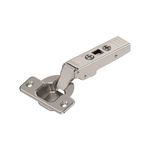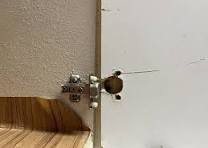Introduction
In the realm of home maintenance, fixing and replacing cup hinges on kitchen and bathroom vanity doors are common tasks for our trusty handymen. The market is flooded with various types and brands, making it a wild west of sorts. But fret not, in this blog, we’ll guide you through the most effective, long-lasting methods to repair these hinges.
A Word for Landlords and Developers
Here’s a pro tip: opt for standard, off-the-shelf hinges for your rental properties. Brands like Blum and Hafele, readily available at Bunnings, Mitre 10, and trade supplier outlets, are your best bet. These hinges are of good quality, economical, and easily accessible. Standardization is key here, and we advise against using unknown brands as they can be a hassle to source. The same advice holds true for door knobs. The top-notch brands for rental properties are Lane and Lockwood.

The Repair Journey
Our handyman service frequently receive calls from real estate agents to fix loose cupboard door hinges. Often, the original attaching screws are too small to handle the wear and tear of constant use. In most cases, they just need a nudge back into place. But when the screws come loose and need tightening, we replace the existing screws with larger, 15mm self-tapping ones.
What to Do When Screws Can’t Be Tightened?
So, what’s the game plan when the screws can’t be tightened anymore? The optimal solution is to core out the screw holes. Use a sharp chisel to create an inverted cone shape at the bottom of the hole. Back fill with Selleys tradies bog. This shape will ensure the epoxy resin doesn’t seep out. Allow the resin adequate time to dry. Drill and secure hinge with large gauge self tapping screws. While other methods like using plastic plugs sound promising, they tend to loosen over time. The resin option, however, is the most durable solution in the long run.

If the chipboard or MDF around the cup hinges is badly damaged and the screws no longer secure, we suggest removing the hinge, drilling a new hole above with a concealed hinge cutter, available from Bunnings, and then refitting. The old hole should be filled with a 2 pack epoxy resin to prevent any moisture from seeping in.

The methods we’ve shared will ensure your hinges stay secure and functional for years to come